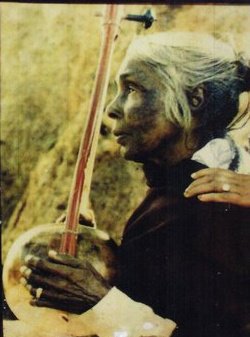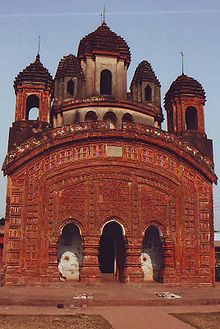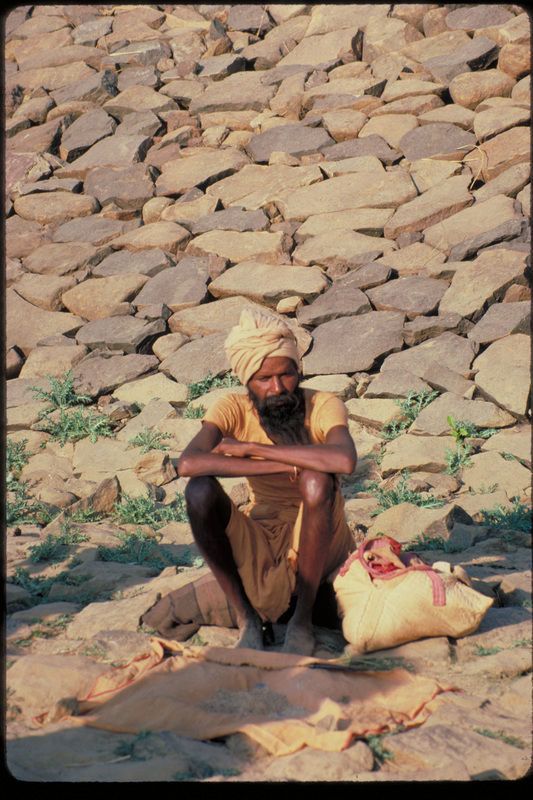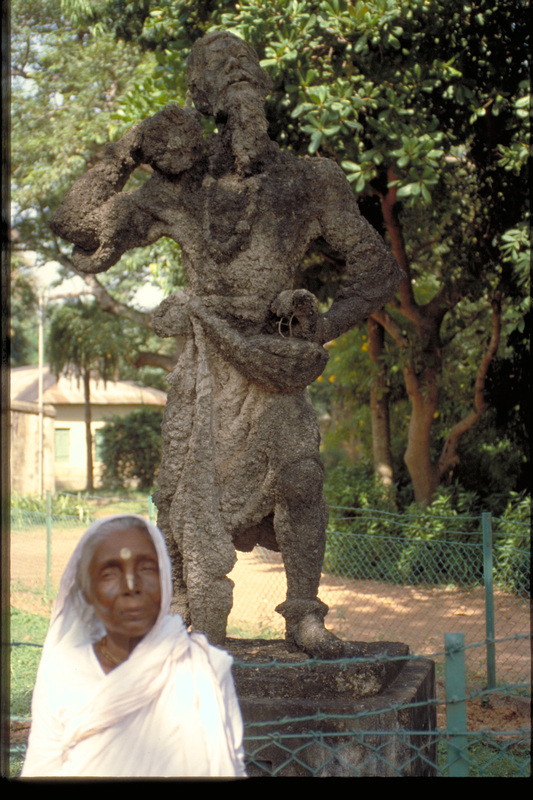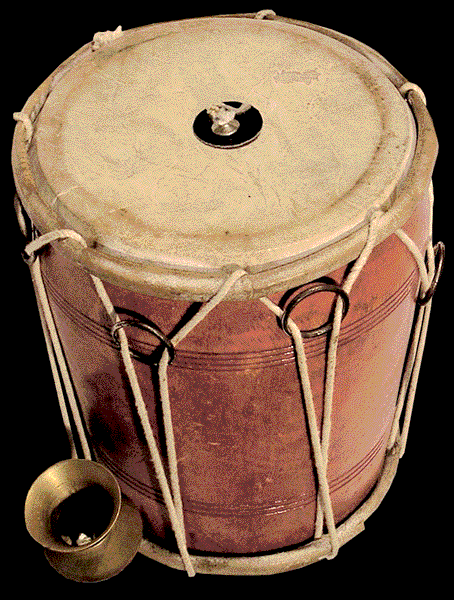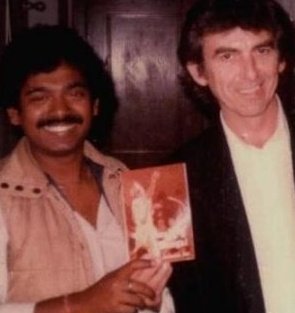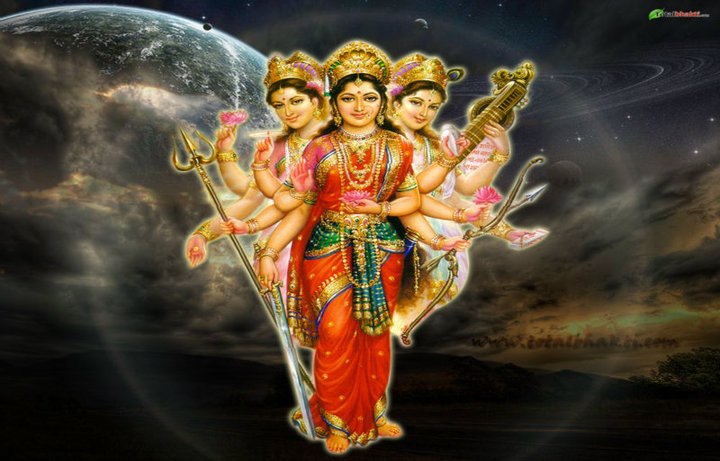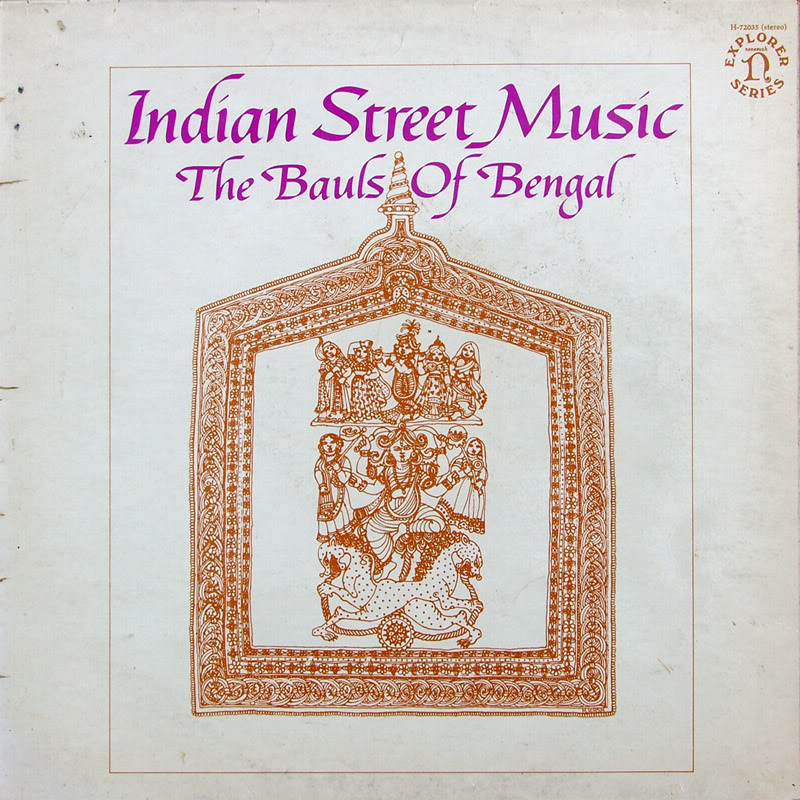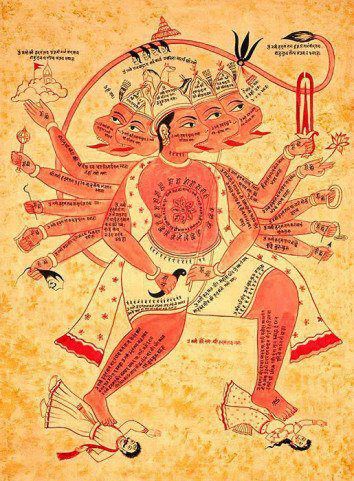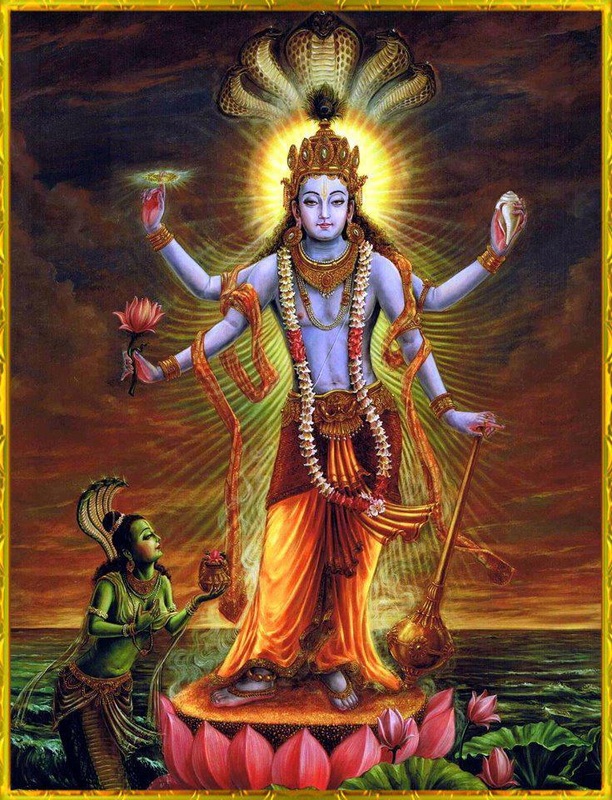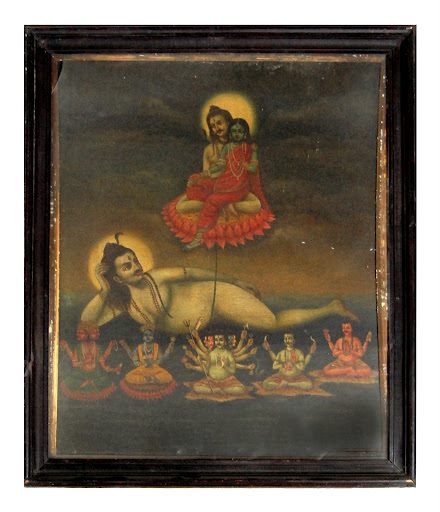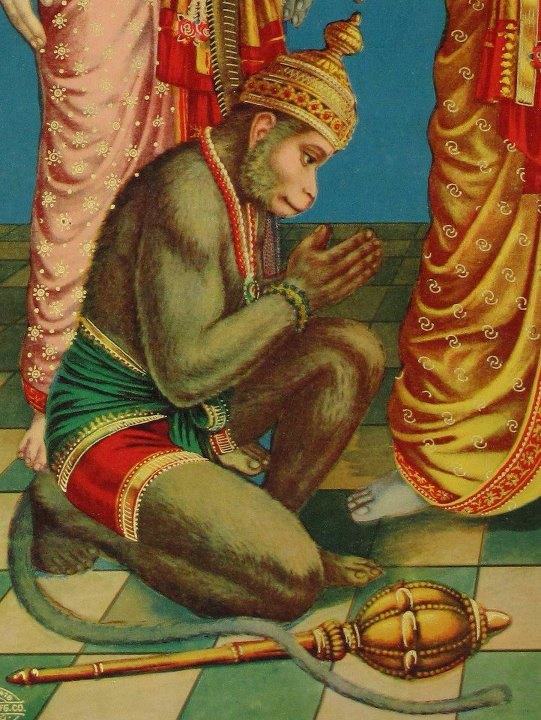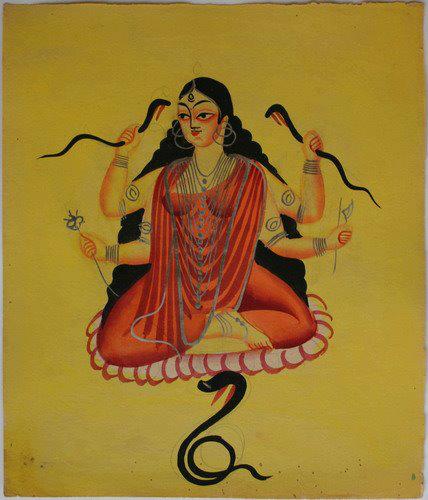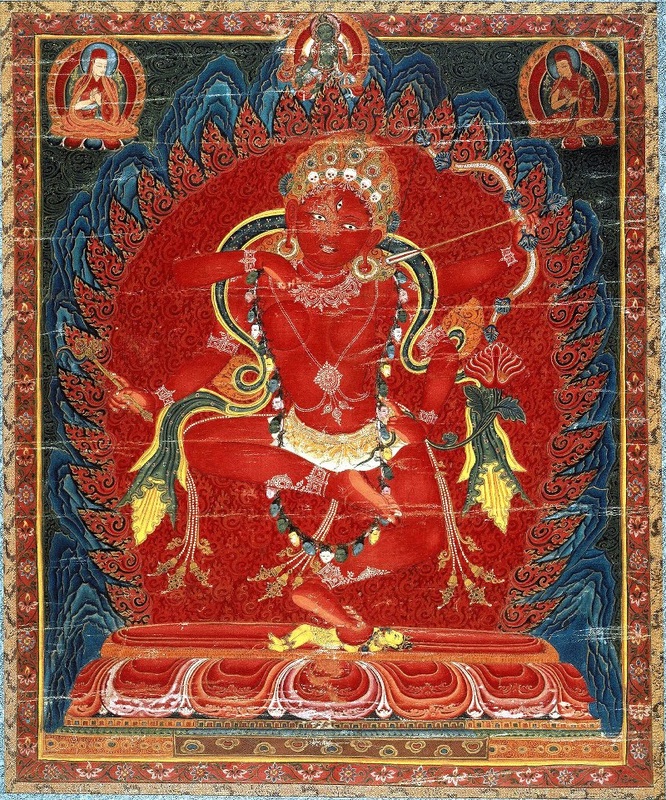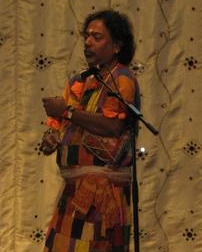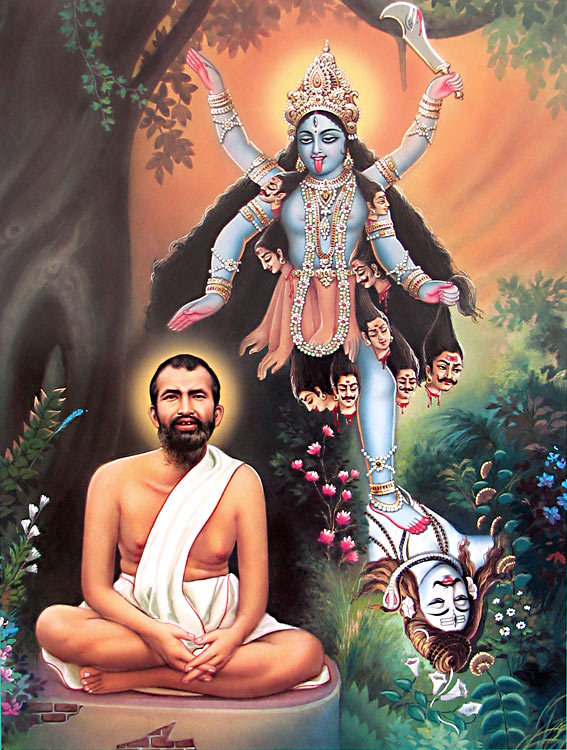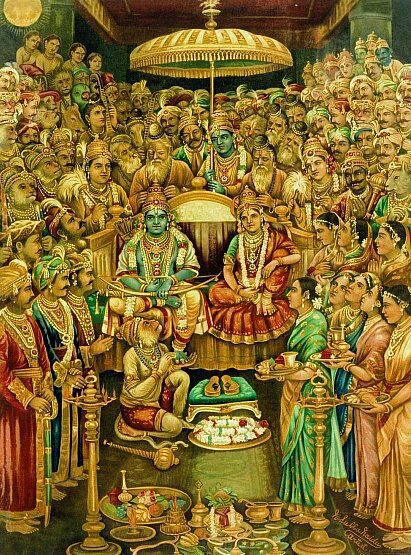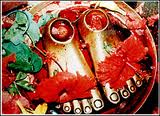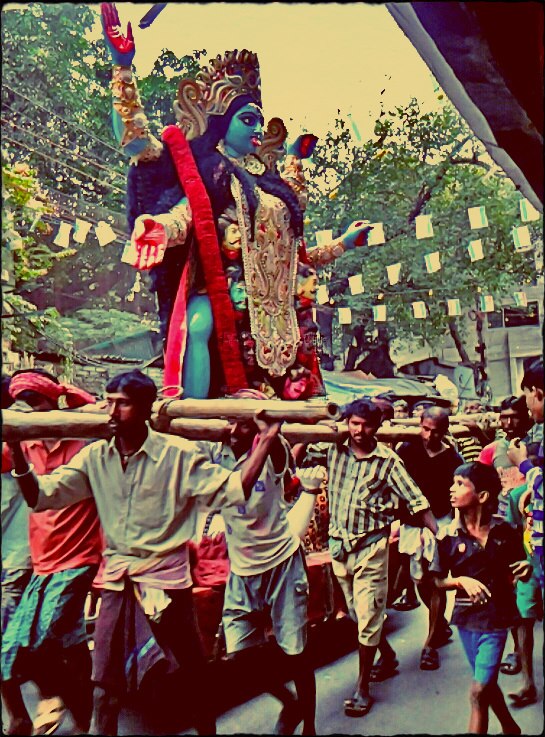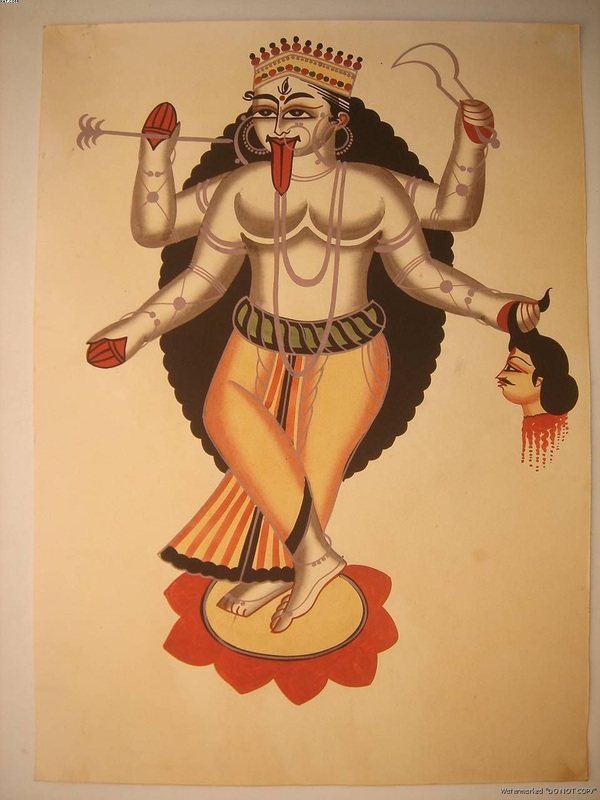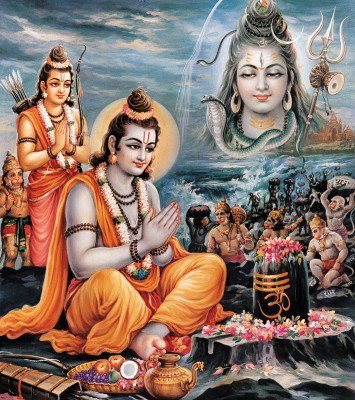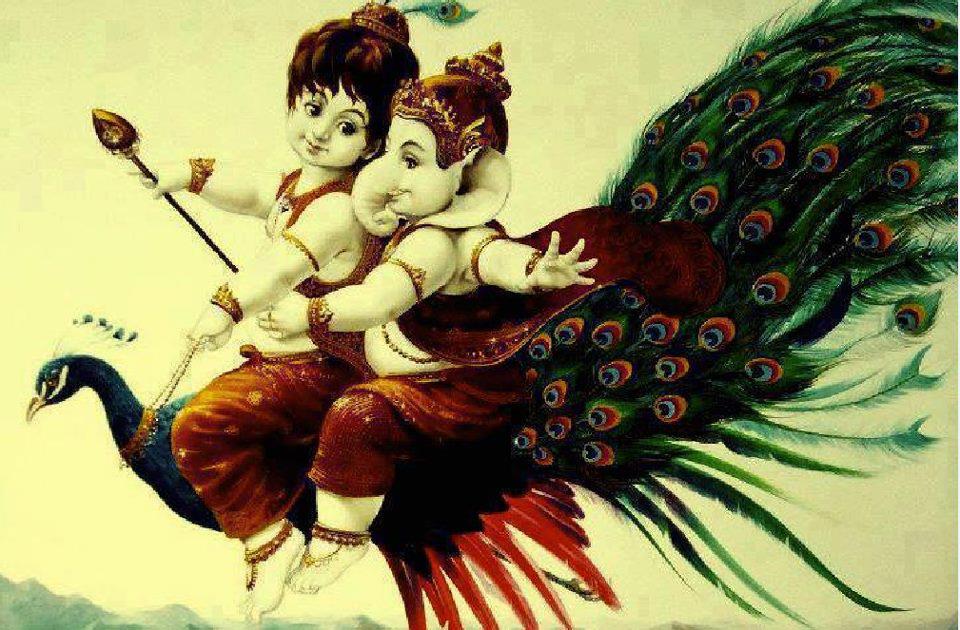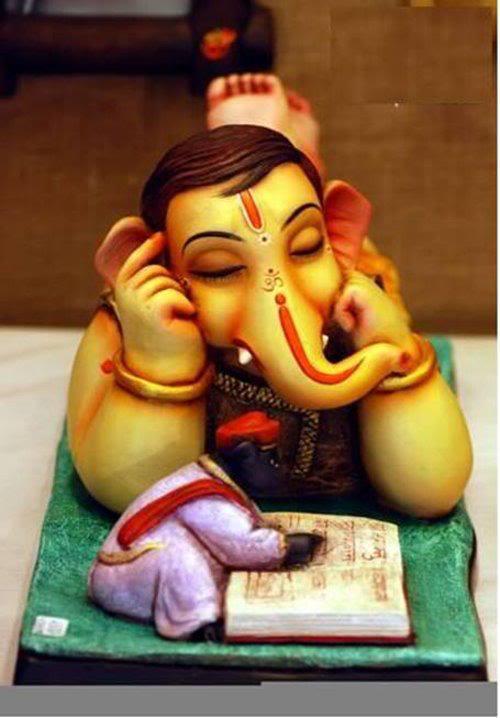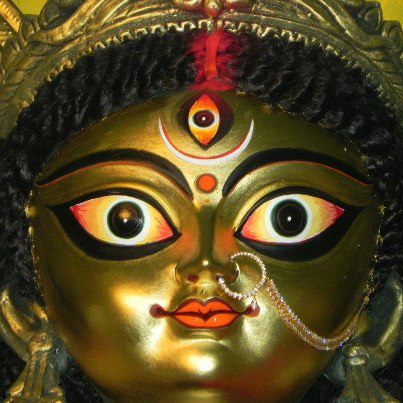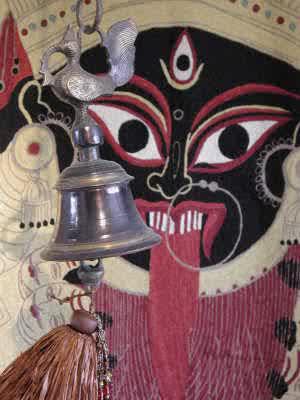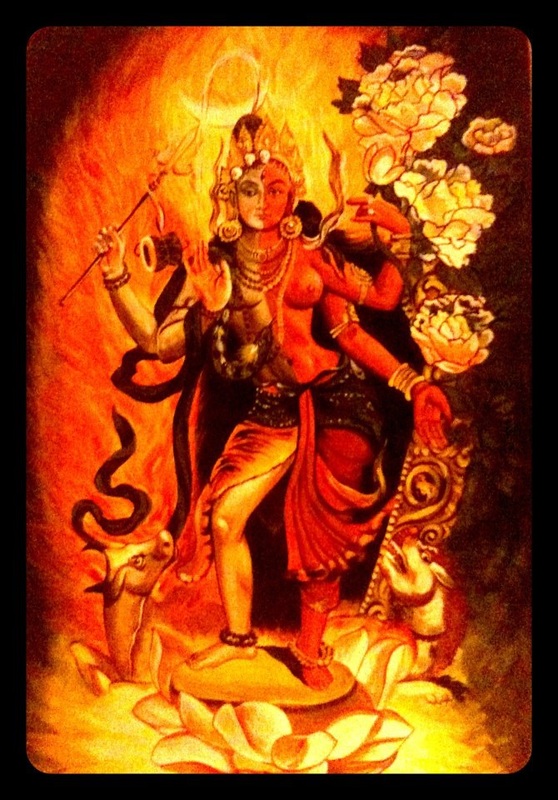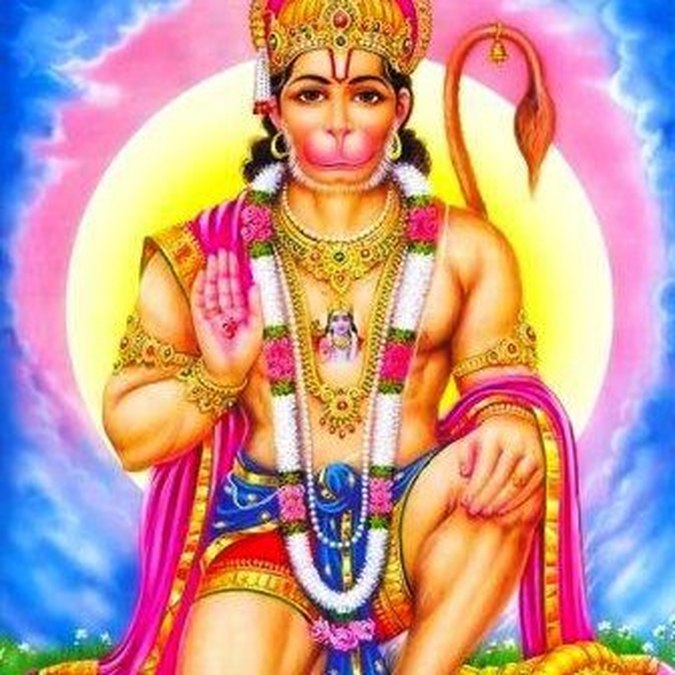
is the symbol of devotion and dedication in the Hindu pantheon. His name is traced to the proto-dravidian word for male monkey, ‘ana-madi’ and took a linguistic variation to become Anuman in Tamil. By and large he is a Southern...er. According to the Bhagavata Purana, Skanda Purana and Brhaddharma Purana, Hanuman is considered to be an incarnation of Lord Shiva or Rudran. Hanuman is an ishta devata of both Vaishnaivites andShaivites. There are writings to the extent that Brahma, Vishnu and Shiva combined to take Hanuman form. Hanuman is said to be protected against Shani.
DEPICTION:
His image is found in many forms, often with one head, two arms and a long tail looped over his head. He normally has a monkey’s face on a very well built and strong human body. There are several other forms also including one with ten arms and five heads. Apart from his own, He manifests as Panchamukha to represent the five most important avataras of Vishnu.
BIRTH:
He belonged to the vanara clan. Hanuman was born in the Treta Yuga, to Anjana, a female vanara and Kesari, a strong vanara who fought in Rama’s army. They prayed to Lord Shiva for a male child. This birth wasplanned by the Supreme lord with a perfect idea in the mind. Another interpretation is Hanuman being Shiva’s incarnation emerging from Anjana’s womb. The combination of Vanara and the celestial gave Hanuman strength, divinity and quick wits - his main characteristics. Being Anjana's son, Hanuman is also called Anjaneya, which plainly means ‘arising from Anjana’.
BHAVARTHARAMAYANA:
The Bhavartha Ramayana holds that Anjana was worshipping Shiva when Dasharatha was performing putrakarma yagna and venerating Shiva. The sacred payasam was to be shared by the 3 prospective mothers of Rama, Lakshmana, Bharata and Shatrughana. A kite snatches a portion and drops it over a forest.
Vayu, the Wind God delivers it to the outstretched hand of Anjana. She consumed it and Hanuman was born as a result. So Vayu chips in to claim parentage. Kambar in his version would hold, as both Anjana and Dhasaratha were praying to Siva, than that was to be a Shiva blessing. The messenger does not become a
father.
VISHNU PURANA:
The Vishnu Purana and Naradeya Purana have their version. The sage Narada, is infatuated with a maiden. So he goes to Vishnu prior to the swayamvara and asks for ‘hari-mukh’ meaning face likeVishnu. But Vishnu, probably he was given to humour, gave him the face of a vanara. When Narada appeared in the kings’s court, the maiden laughed at his ape face. Narada was angered and cursed Vishnu that one day, either he or his avatars would be humiliated by depending on a vanara. Vishnu then told Narada that ‘hari’ has a dual meaning of vanara. Narada repents cursing only to be told that the curse was a boon as Hanuman would be born as an avatar of Shiva to help a Vishnu avatar to kill the demon Ravana.
BRAMACHARYAM:
He is a provider of courage, hope, knowledge, intellect and devotion. His iconography is symbolic of his celibacy, one favoured by wrestlers and those given to physical sports. He is usually pictured as a strong monkey holding a gada or mace which is a sign of bravery and having a picture of Lord Rama on his chest which is asign of his devotion to Lord Rama.Hanuman remained a Brahmachaari throughout his life, an unmarried, celibate god. He is especially popular with body-builders, who believe that like him, one need to be celibate in order to have a strong body. Hanuman always treated women in the form of Mother and Sister. There are many incidences in the great epic Ramayana where this fact is proved.
BHAKTI:
The Rama katha made Hanuman a symbol of devotion and dedication. He is portrayed as an ideal disciple of Sri Rama. Indeed every hair follicle on his body is said to chant Rama nama. Hanuman has intense love for his Lord Rama which can be considered from this instance. Once Hanuman was asked
by Sri Rama, "How do you consider me?". Hanuman said: "Oh Lord, while I identify myself with my body, I am Thy servant. When I consider myself an individualsoul, I am Thy part. But when I look upon myself as the spirit, I am one withThee. This is my firm conviction."
BOONS:
Brahma: The power to induce enemies, protect him from the irrevocable Brahma’s curse, change his form at will, Shiva: boons of longevity and scriptural wisdom; crossing oceans; Indra:
blessed with Vajra weapon will not affect him; Varuna: always be protected from water; Agni: Immunity to burning by fire; Surya: to transform into the smallest or biggest form (laghima or garima); Yama: free from danda, healthy life;Kubera: to remain happy and contended; Vayu: speed in travelling.
RAMAYANA:
Hanuman is an important character in the Ramayana which depicts him as
the epitome of devoted service and loyalty. Sugriva ascends the throne after the
fall of his brother Vali. Soon enough he was given to the pleasures of the
palace. He forgets his promise to Rama by whose prowess he got sits on the
throne.
The ever faithful Hanuman reminds him that “the realm has been won, thy
(Sugriva’s) name has been enhanced’ and that foremost care should be given to
the friends who succoured him. But he shows his monkey attitude and takes
Hanuman’s reminder insufficient. It was much later that Lord Rama sends a strong
message through Lakshmana that Sugriva was to alive to his promises. At all
times Hanuman reminds himself of the search for Sita.
Thus he moved to collect a mighty army for Sugriva consisting of ‘fierce monkey troops and apesof every varied kind, terrific in their form. Sugiva then gave instructions to each troop leader as to the search area. But news reaches that Ravana has movedsouth. That was Hanuman’s district and he takes instructions direct from Rama.
He was entrusted with a ring to show as proof that was Rama’s messenger. The
search parties were getting tired of their fruitless endeavours to discover
Sita. Hanuman was not giving up. The rest were motivated by his encouragement to
persevere. Fortunately Hanuman meets the vulture Sampati, the brother of Jatayu,
whom Ravana slew when the latter prevented the abduction. Thus Sampati too
wanted vengeance against Ravana and rendered all assistance to Hanuman. It is he
that informs Sita presence in Lanka. But, he says “a hundred leagues your course
must be, beyond this margin of the sea, still to the south your way pursue, and
there the giant Ravan view.”
How was anyone going to cross a hundred leagues of water and who could make such a leap? Again Hanuman comes to the front to declare “swift as a shaft from Rama’s bow, to Ravan’s city, I will go.”
According to this promise, Hanuman makes his marvellous leap to reach Lanka.
There he diminishes his size to that of a cat and passed through the city
unnoticed till he reaches the Ashoka grove were Sita was confined. He was in
time to witness Ravana’s inducement to his lovely captice to abandon Rama and
become his bride. Sita is given two months, failing which (my) cooks shal mince
thy limbs and serve thee for my meaning meal! She was not to give in and when
she was alone Hanuman addresses her. On the sight of being convinced that
Hanuman is the messenger she was delighted. Hanuman offers to carry Sita home on
his shoulders. A difficulty arises here.
Rising to such heights as Hanuman would leap, she says, might make her giddy and feel it necessary to hold of Hanuman; but of her own free will she would on no account whatever so much as touch the body of a living man except Rama’s. So she refuses Hanuman’s offers,preferring to remain where she is and sends her love and a present to Rama.
Hanuman does not leave Lanka but goes on assault slaying several of Ravana’s
heroes. He is captured and confesses to being a messanger. His tail is set on
fire but escapes and Hanuman manages to burn the city in several places. Rama is
pleased of Hanuman’s return and of the gem gift from Sita. He was also pleased
to hear of Sita’s constancy. Sugriva plans the logistics to construct a bridge
to Lanka and no sooner they cross the sea. Hanuman carries Rama and Lakshmana is
carried by Angkada. Ravana hears the approach. His son Indrajit engages the army
with loss on both sides. Rama and Lakshmana were injured and nursed by Garuda,
the marvellous vahana of Vishnu. In the second attack Hanuman flies to Sejanjivi
hills to collect medicinal divine herbs. Finally Rama and Ravana meet in open
battle. He makes a single request: to remain as Rama’s faithful servant. It was
granted.
PANCHAMUKA HANUMAN.
This manifestation is traced to a Ramayana
plot. Ravana got assistance from Mahiravanka or Ahiravan, the King of Pathala,
the netherworld. It is said that Hanuman formed a fortress with his tail to
protect Rama and Lakshmana. However the Patahala king overpowered resistance to
take the brothers to Pathala lokha. Hanuman traces and reaches the gates guarded
by Makardhwaja. This chap is part reptile and part vanara. Earlier on we wrote
Hanuman’s tail catching fire. Now, that is dipped into the oceans for the fire
to be put off. Hanuman’s sweat fell into the waters only to become Makardhwaja.
Now it is a father and son story in which the son asks for blessings but fights
to guard the gates. Hanuman captures and ties him up to gain entry.
Hanuman then discovers that to kill Mahiravana, he had to simultaneously
extinguish five lamps burning in five different directions. So he manifests as
Panchamukha or Anjaneya. According to Hanumath Prakaranam in Sri
Vidvarnavatantram, the five faces are Lord Hanuman, of Lord Hayagriva, Lord
Narasimha, Lord Garuda and Lord Varaha. Panchamuka Hanuman extinguished the
lamps and finally kills Mahiravana. Hanuman then instals Makardhwaja as the King
of Patala. He is given strict instructions to be a just and wise king.
FIVE:
Kambar’s Tamil version of Kambaramayana gives an emphasis on the figure
five. Lord Hanuman is a great yogi. He has therefore transcended the pancha
indriyas or five senses.As Pavana Thanaya, he is the son of Wayu, one of the
five elements. Hanuman crossed the ocean, water being one of panchabhutas. He
flies and travels across the sky, that is through one of the five elements. His
mission was to meet and rescue Sita, the daughter of earth. Later he burnt down
Lanka by fire. The fifth canto in the Ramayana is Sundara Kandam which contains
literature on Lord Hanuman’s patriotism towards Lord Rama and his heroic deeds.
Those given to numerology believe in going around Hanuman’s deity 5,14,23 or 32
times as they all add up to five.
It is also said that the five facesdepict five forms of prayers being Naman, Smaran, Keerthanam, Yachanam and Arpanam. Lord Hanuman always used to Naman, Smaran and Keerthanam of Lord SriRama. He totally surrendered, Arpanam to his master Lord Rama. He also begged,yachanam, Sri Rama to bless him the undivided love. In Bhagavat Gita LordKrishna says to Arjun, "He who acts for me, who is engrossed in me, who is my devotee, who is free from attachment, he reaches me" .
We find all these 5 qualities enshrined in Hanuman. Each of his face explains the five divine qualifications. May be an artist thought over about this before making the
Vigraham. The East facing Anjaneya to grant humanity Ishta Siddhi; South facing
Karala Ugraveera Narasimha to grant humanity Abhista Siddhi; West facing
Mahaveera Garuda to grant humanity Sakala Sowbhagya; North facing Lakshmi Varaha to grant humanity Dhana Prapthi and Urdhva Mukha being Hayagriva to grant
humanity Sarva Vidya Jaya Prapthi.
HANUMAN JAYANTI:
The worship ofHanuman, symbolizes the worship of the Supreme Lord, for acquiring knowledge, physical and mental strength, truthfulness, sincerity, self-sacrifice, modesty, loyalty, and profound devotion to the Lord. Sri Hanuman was blessed by Sri Rama with immortality or chiranjeevi. Every temple of Sri Rama contains an idol of
Hanuman. Worship of Hanuman is considered mandatory to complete the worship of
Lord Rama.
During Chaitra, in between March-April, Hanuman Jayanti is
celebrated to honor the birth of Hanuman. People visit the temples where the
idol is given a new coat of vermilion mixed with clarified butter and then
richly decorated. Fasting is done and apart from the Hanuman Chalisa,hymns of
Hanuman, the Ramayana also is read. Tales of Hanuman’s love for Rama are read
aloud and a function boosted with spiritualism.
SHANI:
There is aninteresting story regarding why worshipping Hanuman will help in overcomingShani Dosha but we would consider that in the Navagraha series. In short, In theRamayana war, apparently Hanuman saved Shani from Ravana’s clutches. So Shani returns a favour that Hanuman would not be affected by the graham. According toVedic Astrology, the planet Saturn is called Shanaiswara. The name Shanaiswara means "slow mover". Shani, the son of the Suryadev born to his shadow wife Chaya is the slowest of the Grahas. Shanideva, sort of plays the role of a judge inhuman lives. Bad positioning of Shani results in a difficult period in life.
This Diety in Hinduism who keeps an eye on our deeds and depending on our Karmas we will be rewarded or punished by Shani. It is the most feared of all dieties because of his power to turn the table abruptly, be one a king. There is a popular belief that worshiping Hindu God Hanuman will help in removing the hardships caused by Shani Bhagavan or Saturn. Shani would not overcome Hanuman,Shiva’s incarnation. People worship Hanuman on Saturdays to remove the malefic influence of Sani in their horoscope.
GAYATRI MANTRA:
Aum AnjaneyayeVidmahe, Vayu Puthraya Dheemahe, Tanno Hanumat Prachodayath - We pray to the sonof Anjani and the son of the Wind,May Lord Hanuman propel us.
On Namo
Narayana. Jai Hanuman
Yogi Ananda Saraswati
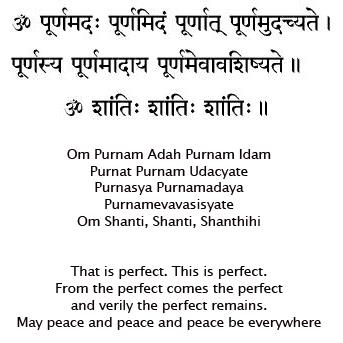
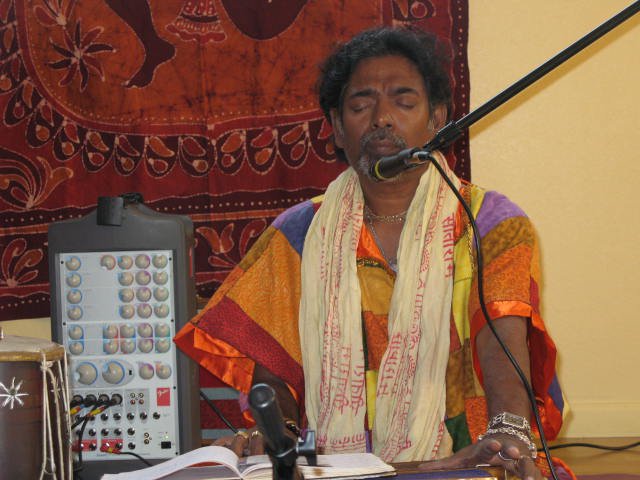
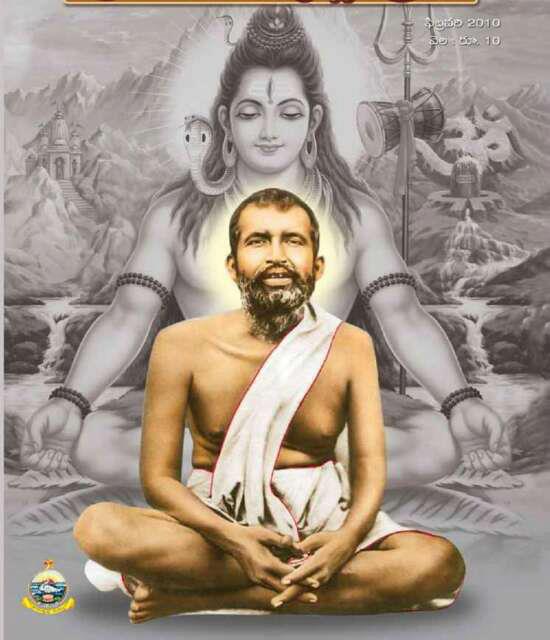
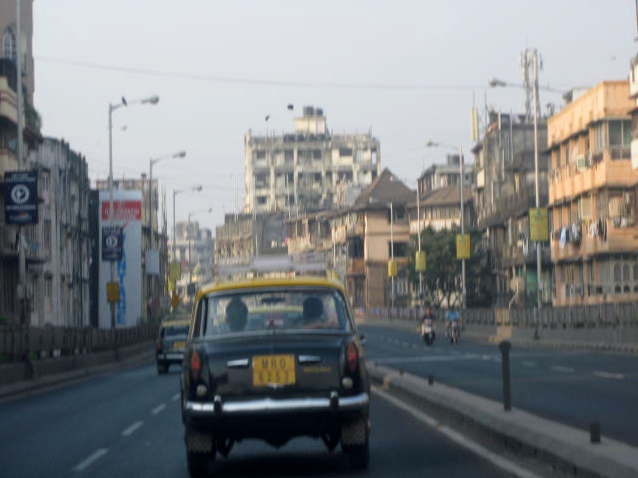
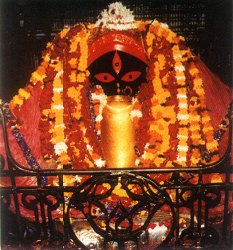
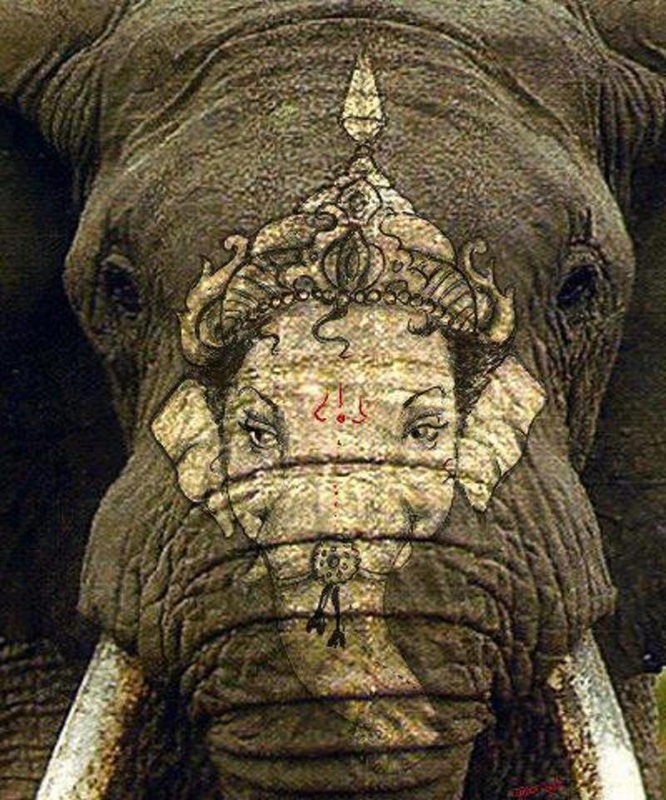
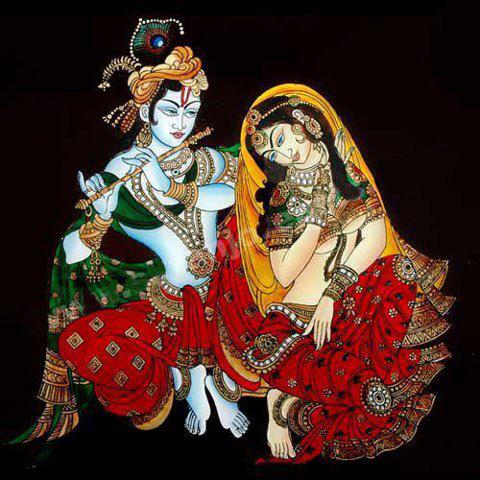
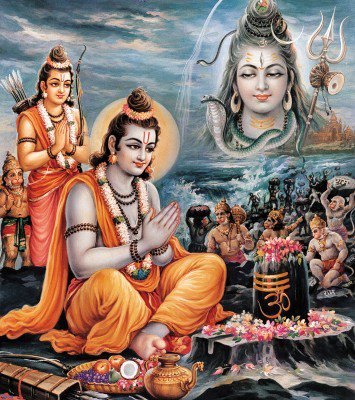
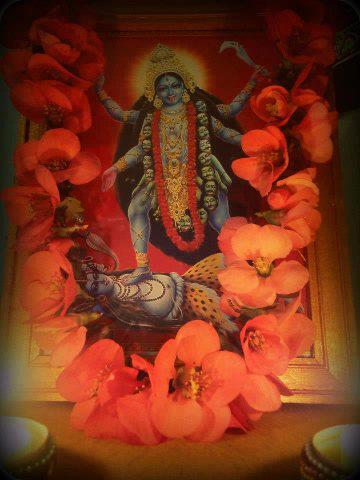
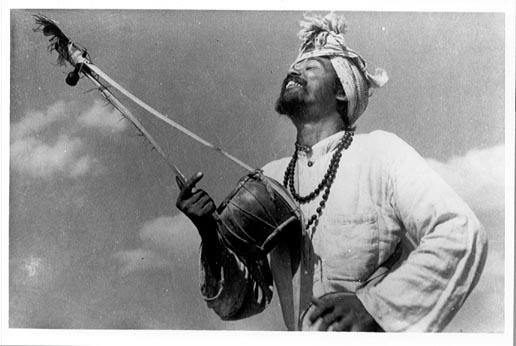
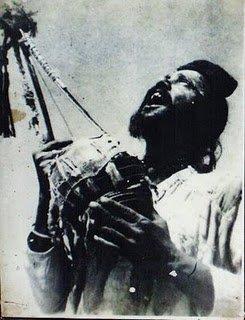
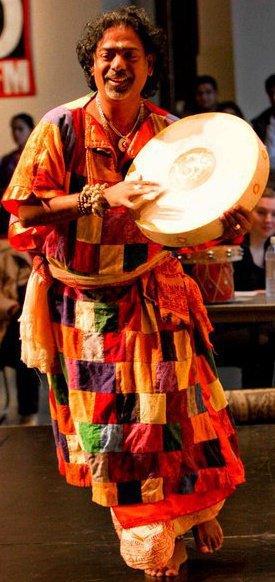
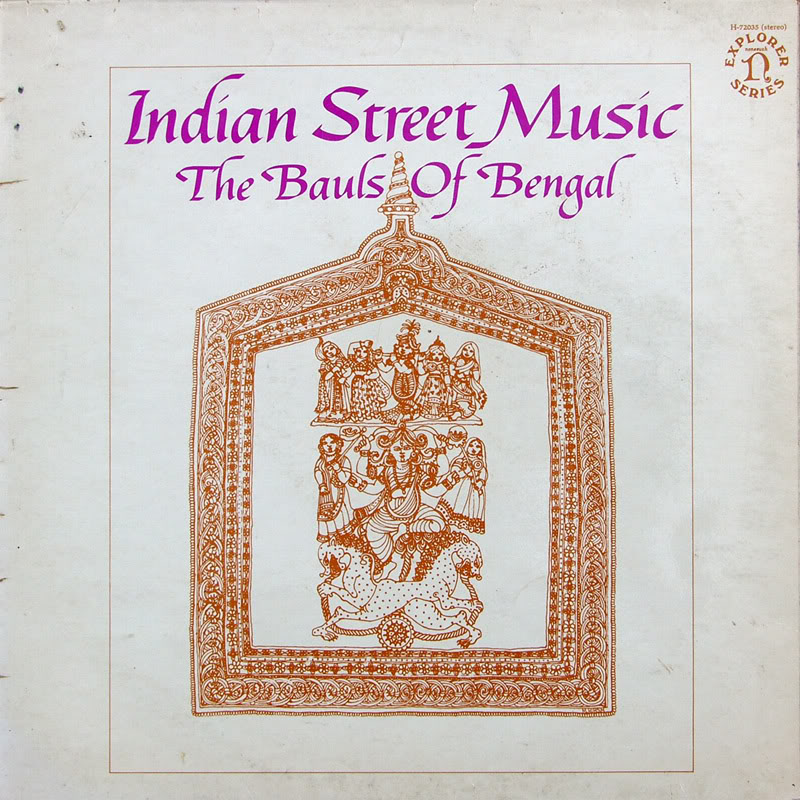
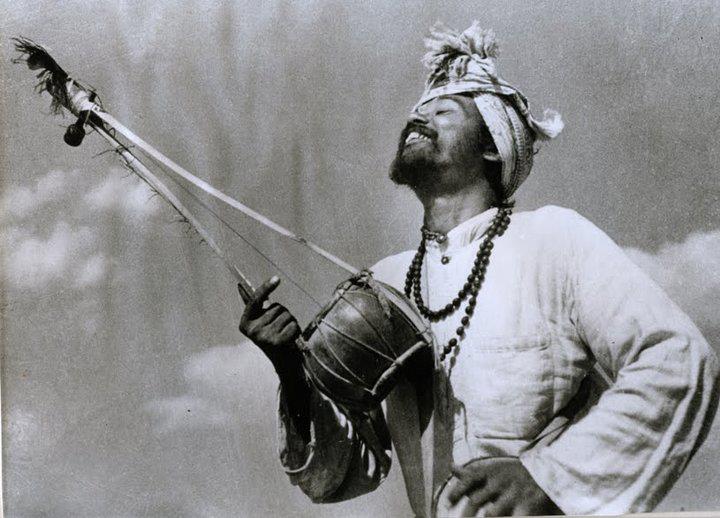
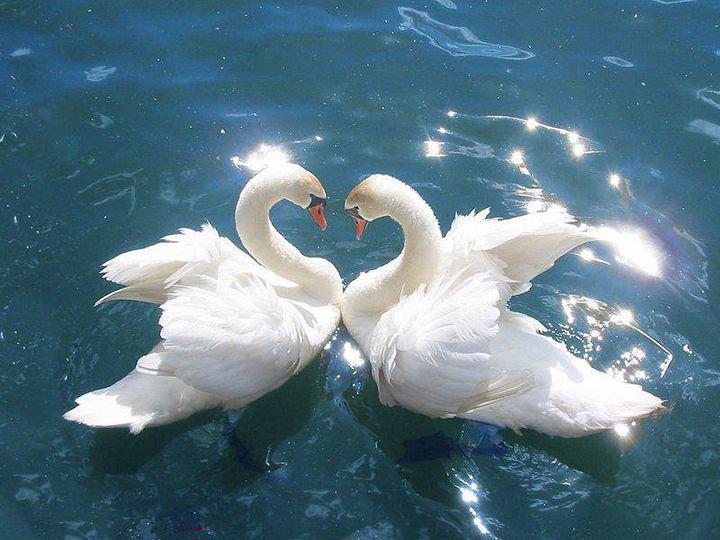
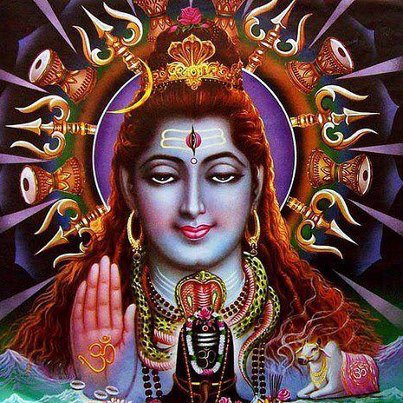
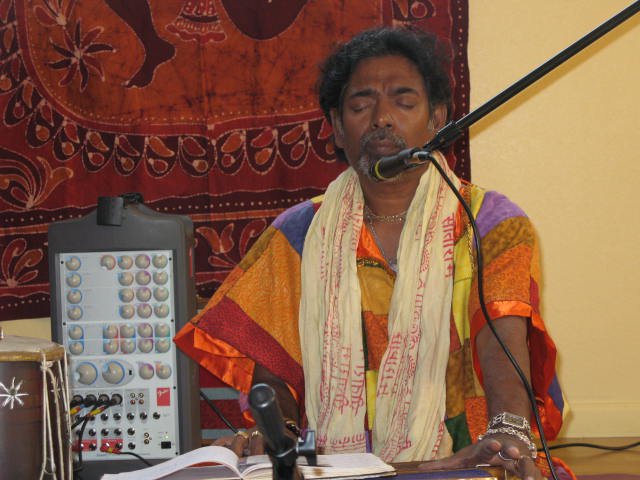
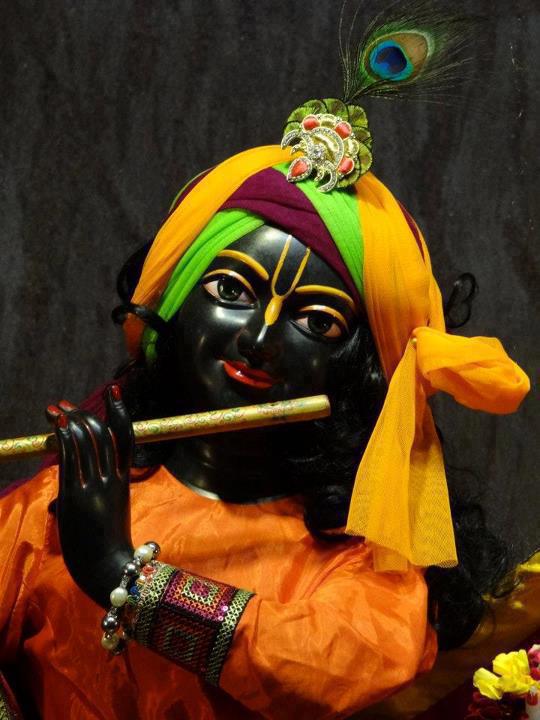
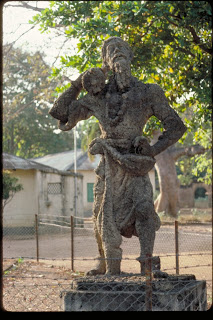
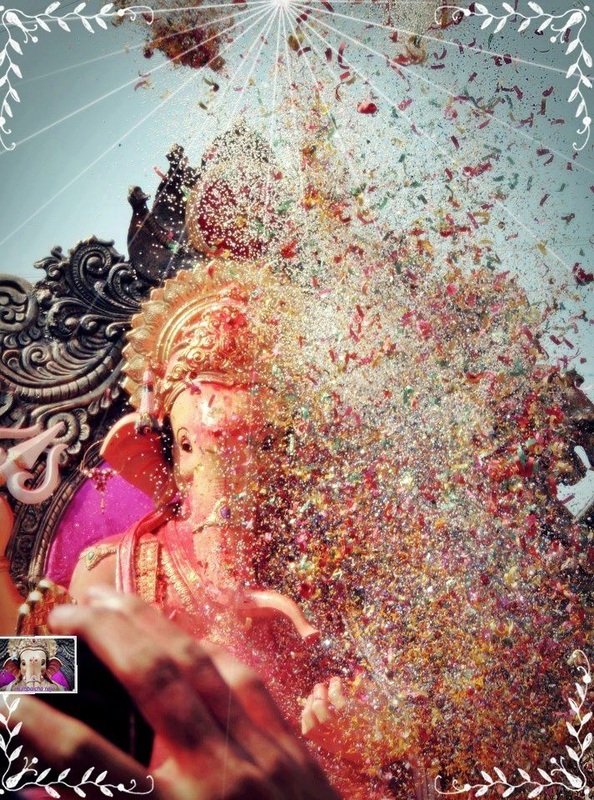
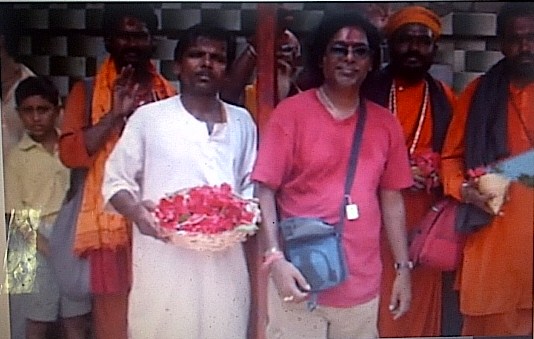
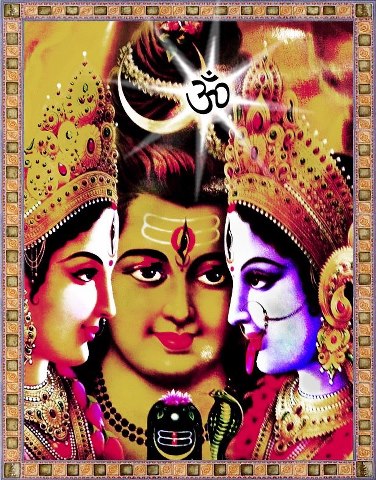
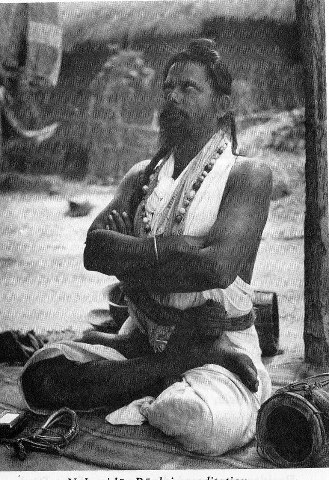
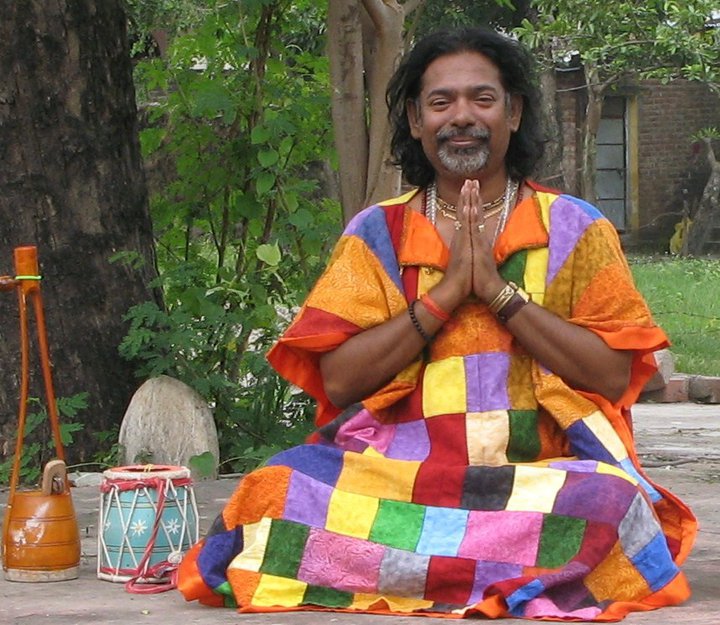
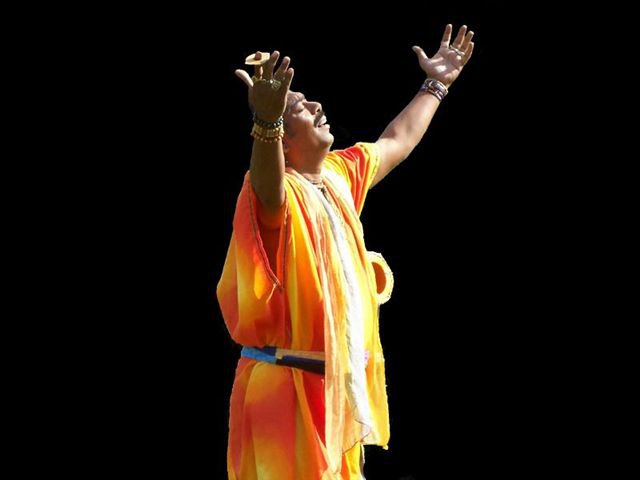
 RSS Feed
RSS Feed
